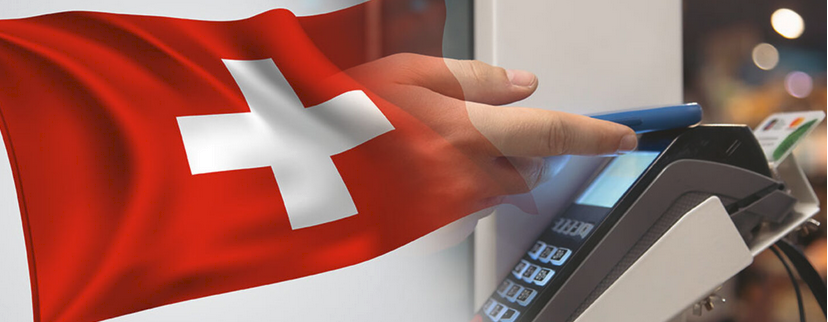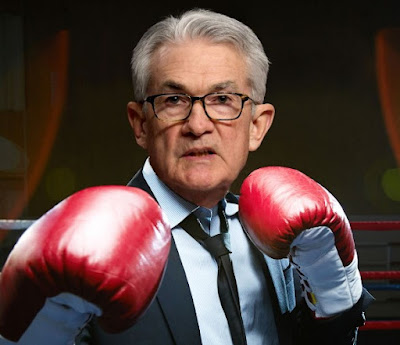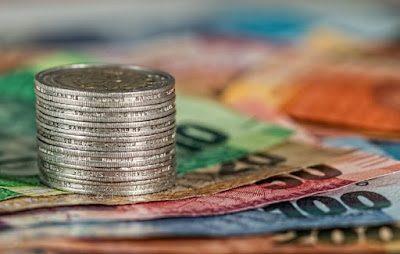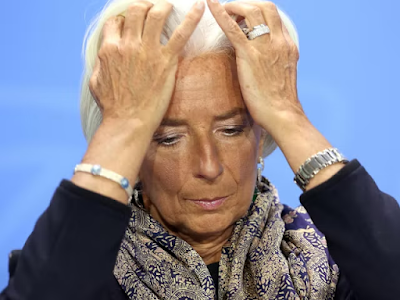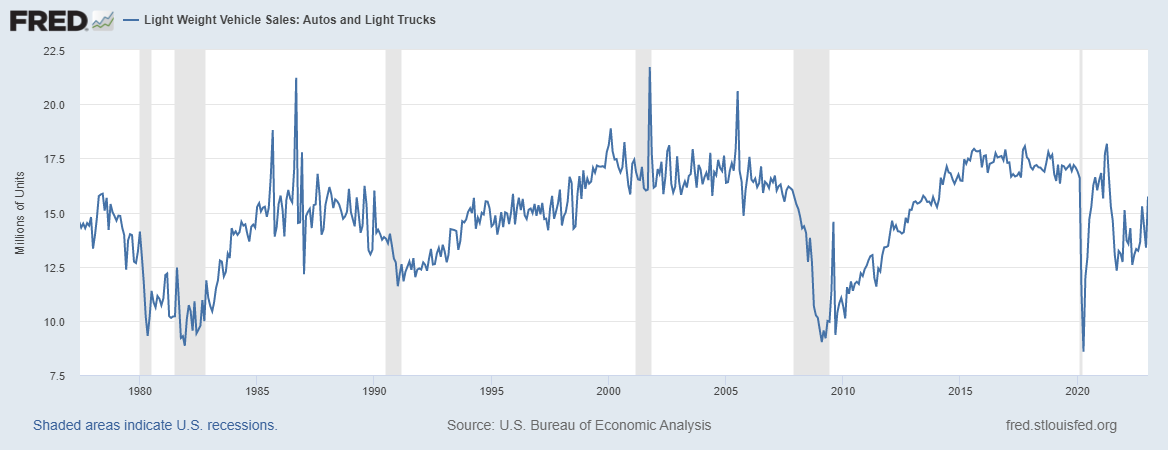| The Swiss National Bank has announced 24 bn profits for 2016. Profits came from the dollar, yen and Canadian dollar, while the pound retreated by 15%. The EUR/CHF is only slightly weaker, mostly because the SNB actively supported the euro. | |
| The SNB mostly profited on rising U.S. stock markets, in particular the S&P500. |
SNB Profit Increases Thanks to Well Performing Stock Markets(see more posts on Nikkei 225, S&P 500 Index, )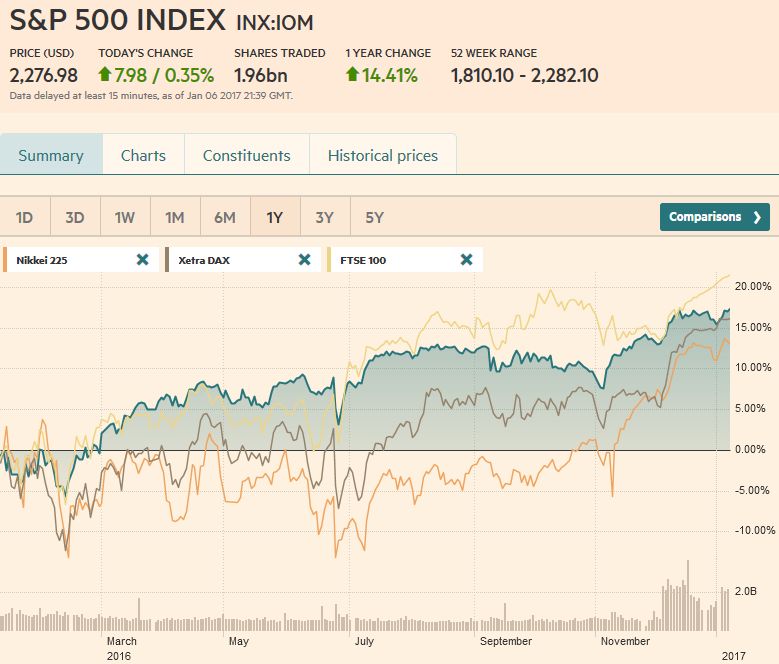 Source: markets.ft.com - Click to enlarge |
| Moreover the SNB took advantage of the stronger gold price. Gold improved by 80$ or 90 CHF in 2016. |
Gold Chart in USD |
Swiss National Bank expects annual profit of over CHF 24 billion
Confederation and cantons to receive distribution of at least CHF 1 billion
According to provisional calculations, the Swiss National Bank (SNB) will report a profit in the order of over CHF 24 billion for the 2016 financial year. The profit on foreign currency positions amounted to more than CHF 19 billion. A valuation gain of CHF 3.9 billion was recorded on gold holdings.As previously announced, the allocation to the provisions for currency reserves will be CHF 4.6 billion. After taking into account the distribution reserve of CHF 1.9 billion, the net profit will be in excess of CHF 21 billion. This will allow a dividend payment of CHF 15 per share, which corresponds to the legally stipulated maximum amount, as well as a profit distribution to the Confederation and the cantons of CHF 1 billion. The Confederation and the cantons are also entitled to a supplementary distribution of a maximum of CHF 1 billion in the event that the distribution reserve after appropriation of profit exceeds CHF 20 billion. Based on the provisional figures, the supplementary distribution for the 2016 financial year is likely to be about half a billion francs. One-third of the ordinary and supplementary distribution is allocated to the Confederation and two-thirds to the cantons. After these payments, the distribution reserve will amount to CHF 20 billion. The rules for profit distribution are set out in the profit distribution agreement between the Federal Department of Finance and the SNB of 9 November 2016.A detailed report on the annual result with definitive figures will be released on 6 March 2017; the Annual Report will be published on 23 March 2017.
Comment by Marc Meyer on the question in German
Does the SNB possess hard assets with their big and well-performing stock market portfolio?
Full story here Are you the author? Previous post See more for Next post
Könnte die SNB ihre „harten Assets“ (Euros und Dollars) tatsächlich per Knopfdruck kaufen, so würde das bedeuten, dass die SNB durch „Geld drucken“ Eigenkapital schaffen könnte.
Der Artikel basiert also auf einer falschen Prämisse.
Warum?
Weil die SNB in einem ersten Schritt eigene Liquidität schaffen würde und diese dann in einem zweiten Schritt in Euros und Dollars umtauschen würde.
Beim ersten Schritt würde die Aktivseite der SNB-Bilanz verlängert ohne Schulden auf der Passivseite. D.h. durch Eigenfinanzierung. Die Konklusion wäre, dass die SNB durch Geldschöpfung Eigenkapital schaffen würde.
Im zweiten Schritt würde sie dann die selbst geschaffenen „Liquiden Mittel“ gegen „harte Assets“ (Euros und Dollars) tauschen. Das wäre dann ein Aktivtausch in der Bilanz der SNB.
Resultat: Auf der Aktivseite hätte die SNB Euros und Dollars und auf der Passivseite Eigenkapital.
In Tat und Wahrheit besitzt die SNB auf ihrer Passivseite aber nicht Eigenkapital, wie Herr Jordan behauptet, sondern Fremdkapital, d.h. Schulden.
Das ist ein himmelweiter Unterschied.
Mit ihren über 600 Milliarden Schulden ist die SNB zur weitaus grössten Schuldnerin in unserem Lande geworden.
Die SNB sollte Kapitalgeberin der letzten Instanz sein („lender of last resort“). In Tat und Wahrheit ist die SNB aber „borrower of last resort“. Die SNB hat dreimal mehr Schulden als Bund, Kantone und Gemeinden zusammen.
Unsere Nationalbank hat doppelt so viele Schulden wie der Staat Griechenland insgesamt.
Die Assets der SNB können nie und nimmer als „hart“ bezeichnet werden. Es befinden sich im Portefeuille Anleihen von Staaten wie Griechenland mit einer minderen Bonität als die Schweiz hat. Das ist ein schlechtes Geschäft, das früher oder später ins Auge gehen kann.
Nur ein minimer Anstieg des Zinsniveaus (Basiseffekt!) kann zu einem Desaster in der Bilanz der SNB führen.
Zudem manipuliert die SNB den Devisenmarkt. D.h. der Euro bleibt über eine gewisse Zeit hoch, um dann umso stärker zu fallen. Daraus folgt, dass die Assets in der Bilanz der SNB über eine Zeit lang zu hoch bewertet werden.
Auch hat die SNB ein gewaltiges Devisenrisiko in ihren Büchern: Im Gegensatz zu den Geschäftsbanken ist ihr Portefeuille nicht breit diversifiziert, sondern alle Schulden sind in Franken und ihre Vermögen in weichen Währungen.
Das Vermögen der SNB repräsentiert also keineswegs die Schweiz, sondern im Gegenteil das Ausland.
Das ist brandgefährlich für die Schweiz.
Fällt das Eigenkapital der SNB in den Negativbereich, so werden die Aktionäre der SNB als Erste alles verlieren.
Zudem haben die Aktionäre der SNB keinen Anteil an einem Gewinn der SNB, sondern nur an einem Verlust.
Die SNB ist also keineswegs unterbewertet, sondern stellt im Gegenteil einen gewaltigen Devisenplay dar mit einem spekulativen Hebel von rund eins zu zehn.
Das alte Casino in Bern ist mittlerweile zum grössten Casino der Welt aller Zeiten avanciert.
Tags: British Pound,Canadian Dollar,Japanese yen,newslettersent,Nikkei 225,S&P 500 Index,SNB balance sheet,SNB equity holdings,SNB Gold Holdings,SNB profit,SNB results,SNB sight deposits,Swiss National Bank,US dollar





















